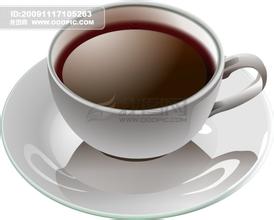Citrus-flavored Yejassefi Coffee Manor: an introduction to the flavor and taste of Cochel Manor
Ethiopian coffee is graded not according to the number of seeds, but according to the proportion of defective beans in the raw beans. In October 2009, Ethiopia launched the ECX Fine Coffee Trading Grading System. Q-Grader rated green beans as follows:
There are two grades of Grade 1 and Grade 2.
Sunlight plus snow is divided into Grade 1, Grade 3, Grade 4 and Grade 5.
Grade 1 is the highest grade, that is, the lowest defect rate, the best quality of the Yerga Shefi flavor characteristics
Washed yega-sherry has a distinct lemon flavor, refreshing jasmine flowers, and soft fruit acids and citrus flavors, fresh and bright taste.
Sun-dried yejia sherry has charming fruit acid, clean fermented fruit sweet, elegant fruit aroma, sweet aftertaste
Ethiopia's traditional way of sun treatment is rough and heavy, which is criticized by people. In 1959, Yejia Shefei production area introduced South American washing treatment method, most production areas are generally used washing treatment, that is, coffee fruit peeling, fermentation, washing process after removing pectin layer, and then drying.
Since 2006, some coffee processing plants in some producing areas have adopted exquisite overhead solarization, which involves intensive manual labor to isolate the coffee fruit from contact with the ground and prevent the dirt from being produced in the process of solarization, creating an unusually clean fruit flavor. After more than two weeks of sun exposure, the dark brown coffee cherries are professionally stored, waiting for the full flavor to ripen. Before sale, the dried cherry pulp and sheepskin are removed, and then the immature beans and over-fermented beans are removed. Strict control greatly improves the quality of the sun-dried beans. Cultivation system and environment
The mountain villages in the Yega Shefi region are cool and foggy, spring all year round, cool but not hot in summer, rainy but not damp in winter, and the best environment for planting Arabica. There are no large coffee plantations here. Coffee farmers plant coffee mixed with other crops, usually under banana trees, forming a unique landscape. Yega Shefi is divided into two categories according to the different processing methods of coffee beans: Class A is the washing treatment method, the grade standard is formulated by SCAA, which is divided into Gr-1 and Gr-2. The smaller the Arabic numerals, the higher the grade. G1 has a distinct style, citrus flavor and floral flavor. The flavor in the coffee liquid is irresistible to everyone. Class B is sun-treated green coffee beans, graded into Gr-1, Gr-3, Gr-4, Gr-5, the same highest grade of G1 sun-dried yea and sherfie fruity, open the freshly roasted G1 sun-dried yea and sherfie coffee bag can subvert everyone's original understanding of coffee, only those who have tasted the highest grade of sun-dried yea sherfie will believe that coffee is a kind of fruit Coffee trees are mostly planted in farmers 'backyard or mixed with other crops in farmland, Each household production is not much, is a typical pastoral coffee. Yega Shefi award-winning beans almost come from the coffee villages and communities mentioned above. The so-called "yejia sherry flavor" refers to rich jasmine flowers, lemon or lime acid aroma, as well as peach, almond sweet or tea aroma. The phrase "coffee in the mouth, flowers in full bloom" is the best way to describe it, just as flowers stimulate the comfort of taste buds and nasal olfactory cells. In addition to the floral fragrance, the body is delicate and mellow, like silk massage in the mouth, wonderful touch. Many coffee chemists have begun to study the microclimate and soil surrounding Yegashefi in order to derive a formula for growing fine coffee. Initially, Yegashefi's coffee trees were grown by European monks (a bit like Belgian monks growing wheat to brew beer), and later by farmers or cooperatives. Yega Shefi is actually constructed by surrounding coffee communities or cooperatives, including Idido, Harfusa, Hama, and Biloa near Misty Valley, all washed, but a small number of unique beans are deliberately sunburned to enhance the charming fruity flavor and body. These small mountain villages are foggy, spring all the year round, gentle breeze in summer, cool but not hot, rain but not damp, winter is not cold damage, breeding a unique citrus and floral regional flavor strictly up, Yegashefi is Ethiopia Sidamo Province, located in the northwest of Sidamo, near the mountains and lakes, Ethiopia is one of the highest coffee producing areas. However, the production method and flavor here are so prominent that Ethiopian coffee farmers compete to be proud of their own coffee with Yegashefi flavor, so they are independent from the West Damo production area and become the most famous production area in Africa.

Important Notice :
前街咖啡 FrontStreet Coffee has moved to new addredd:
FrontStreet Coffee Address: 315,Donghua East Road,GuangZhou
Tel:020 38364473
- Prev

Full-bodied, spicy Coffee from Cedar Mochizo Coffee Flavor and Manor characteristics
Local small farmers began growing organic coffee in 2001 and work closely with medium-sized coffee producers because they are familiar with how to grow forest coffee in the highlands. It is one of the micro-producing areas with regional characteristics in the Sidamo producing area. The coffee in this region is quite unique, and the coffee produced is often noticed by the market. Ninety Plus's legendary beans (nekisse)
- Next

Introduction to the characteristics of coffee flavor and taste of Manor Ireta Manor in Panama
Panama's geographical advantage is that it has many distinctive microclimate areas suitable for coffee cultivation, and Panama also has many persistent and professional coffee growers. This means there will be a lot of very good coffee in Panama, but these coffees are often associated with high prices. The high coffee price in Panama is mainly caused by the following factors: land price:
Related
- Does Rose Summer choose Blue, Green or Red? Detailed explanation of Rose Summer Coffee plots and Classification in Panamanian Jade Manor
- What is the difference between the origin, producing area, processing plant, cooperative and manor of coffee beans?
- How fine does the espresso powder fit? how to grind the espresso?
- Sca coffee roasting degree color card coffee roasting degree 8 roasting color values what do you mean?
- The practice of lattes: how to make lattes at home
- Introduction to Indonesian Fine Coffee beans-- Java Coffee producing area of Indonesian Arabica Coffee
- How much will the flavor of light and medium roasted rose summer be expressed? What baking level is rose summer suitable for?
- Introduction to the characteristics of washing, sun-drying or wet-planing coffee commonly used in Mantenin, Indonesia
- Price characteristics of Arabica Coffee Bean Starbucks introduction to Manning Coffee Bean Taste producing area Variety Manor
- What is the authentic Yega flavor? What are the flavor characteristics of the really excellent Yejasuffi coffee beans?

